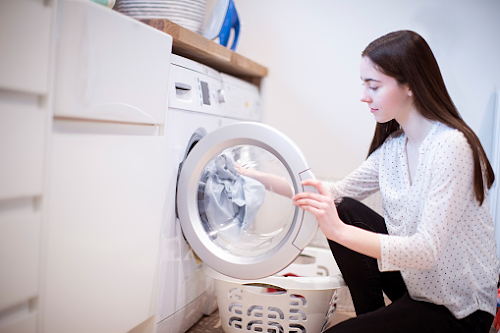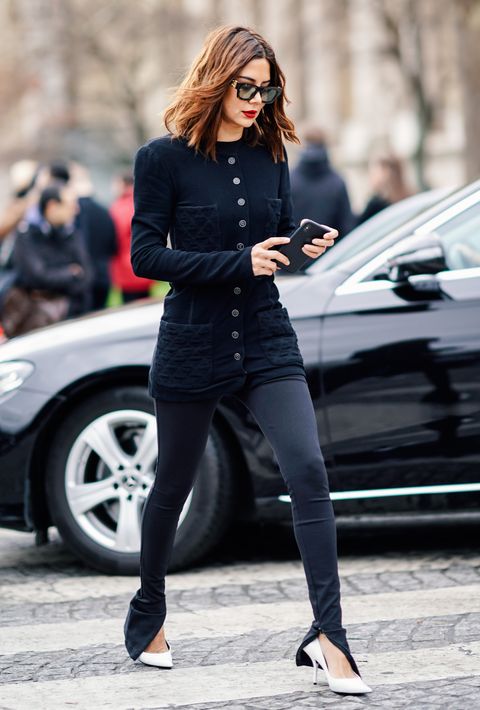The Newest Thing in Fashion? Old Clothes
It has a notable model/character on the cover: Paloma Elsesser, the hefty size model, inclusivity champion and British Vogue top choice. It has reflexive shoots by acclaimed photographic artists: Katerina Jebb and Mark Borthwick. Furthermore, it has garments credits that incorporate Helmut Lang, Paul Smith, Adidas and Balenciaga.
In one manner, notwithstanding, it isn't run of the mill in any way. The credits for "where to purchase" incorporate the Salvation Army, Etsy and eBay. Show Copy might be another magazine, be that as it may, as the manager's letter says, it "doesn't include a solitary new design thing." Every thing of attire it pictures and advances is vintage. Used. Thrifted. Pre-cherished. For resale.
 |
| Image source from indiatvnews |
"The thought was to make utilized garments attractive," said Brynn Heminway, the supervisor of the magazine, which will have a consistent stream of generally shoppable online substance, and will be distributed double a year as a restricted release collectible. "Since I sincerely feel the same old thing is feasible. Everybody disclosed to me I could never get any promoting backing, or anybody to expound on it." But it ended up, the circumstance was great.
Following quite a while of pushing just new, new, new (while in the background scouring swap meets for motivation), style brands are starting, at long last, to freely accept the old. Upcycling is arriving at minimum amount.
It very well might be the most solid change in the design framework to emerge from the pandemic: the one genuine item to rise out of the entirety of the business talk in May and June about change and supportability and worth frameworks.
The prior week Display Copy showed up, Miu presented Upcycled by Miu: a restricted assortment of vintage dresses from the 1940s through the '70s that have been changed, refashioned and in any case energized for a contemporary client. The week prior to that, Levi's divulged Levi's Secondhand, a buyback and resale program that will permit clients to offer their old denim to Levi's so it tends to be fixed, rethought and exchanged (or reused).
They are both continuing in the strides of Maison Margiela, which put upcycling at the focal point of its imaginative interaction back in February when it presented the Recicla line (Italian for "reuse") — an assortment based on pieces of clothing the architect John Galliano's group finds in cause shops and afterward deconstructs and adjusts — and has since multiplied down on the thought. Which itself came in the wake of Patagonia's Worn Wear program, a pioneer in the field.
Toward the beginning of October, Gucci reported an organization with the RealReal, the resale site, for a Gucci-explicit second life store on the stage, similarly as before it.
Also, talking about Ms. McCartney, she has made another arrangement to upcycle her own examples and pieces that were made however never put into creation — garments that had been gathering dust in a capacity storage room or holding back to be auctions off inexpensively at test deal. The upcycling will incorporate adding some additional adornment and manually written notes on the labels and offering the pieces as oddball semi couture.
She is likewise plotting to reissue her most well known previous styles, as is Michael Kors, who last season revamped a cape from a fall 1999 assortment and as of late incorporated a dress from spring 1991, initially worn by Anna Wintour to Grace Coddington's 50th birthday celebration party at Indochine, in his spring 2021 assortment.
There is no "fair" about it, however. Such an advancement is the opposite of the previous standard way of thinking, which held that in the event that you didn't immerse individuals with a consistent stream of new items, baffling their faculties and soaking their judgment places, you gambled losing their consideration — and wallet share.
That was, it ended up, a momentary perspective that smelled of weakness, depending on freneticism and background noise. It might have helped deals, however it additionally prompted an overabundance of stuff as well as a disintegration of the incentive. All things considered, if the organization that made an article of clothing didn't think it merited holding tight to for in excess of half a month, for what reason should the individual who gets it?
When that certainty and comprehension is lost, it is indistinct how it at any point returns. Upcycling might be the appropriate response.
"I began being a style fashioner in light of the fact that discovered nothing I enjoyed," said Mrs. Prada, who detests discarding garments and has an entire separate condo where she keeps her old closet just as her mother's.
"Prior to that, for a very long time I wearing vintage," she proceeded. "I generally wondered why I preferred it so much, and I believe it's the set of experiences. Each dress addresses an individual, a piece of a daily existence. As far as I might be concerned, the past consistently had an extraordinary worth since anything you take in comes from that point."
However quite recently, during a conversation in mid 2019 for Muse magazine about style's part in the environment emergency, I asked Marco Bizzarri, the CEO of Gucci, why his image didn't reclaim its own garments whenever shoppers were finished with them so they could be upcycled and exchanged. Why, however design was progressively wrestling with the natural effect of materials toward the beginning of an item's life, there wasn't as much spotlight on its finish of life, or second life. At that point, he said it was excessively muddled and frameworks weren't in place.So what changed? In the first place, the way that, right off the bat in the pandemic when nations were in lockdown, numerous factories were not working, so creators needed to go to deadstock (texture left over from past assortments and a word that in itself mirrors the business' previous disposition) to make items.
This aided break the "old" hindrance, said Batsheva Hay, who utilized her extra texture to make a progression of restricted release "housedresses." Traditionally, she said, design had been "apprehensive about anything last season," despite the fact that purchasers have positive relationship with "maintainability."
Add to this the acknowledgment that purchasers themselves were, as Giorgio Belloli, the main business and manageability official of Farfetch, said, "changing their conduct and beginning to see more worth in their things." (This thus incited Farfetch to grow its Second Life program, which permits clients to offer old satchels for on location credit in Britain, the United States and a few different nations in Europe.) They're changing a direct result of pandemic-actuated financial variables and the agreement, not, at this point discussed, that the duty to address the landfill issue lies with style makers, yet in addition customers.
All of which has helped support the much proclaimed development of the resale market, which ThredUp has anticipated will hit $64 billion by 2024, with the online used market growing 69% somewhere in the range of 2019 and 2021. Furthermore, the way that undeniably, Gen Z, or what Ms. Heminway of Display Copy calls "the Depop age," has gotten some distance from the misuse of quick style and, estimated out of even contemporary design, pushed toward thrifting.(Whether they will commend the style embrace of their shopping technique is an alternate inquiry; frequently, when the more established age co-selects the conduct of the youthful, the youthful get earned out and proceed onward.)
The outcome is an incredible blend of powers pushing style, and how we consider garments, toward another path. Despite the fact that maybe the most impressive power of everything is personal responsibility — and not simply business.
Incidentally, the test of working with old stuff, of reevaluating it, regardless of whether with innovation or plan (or both), has opened up totally different domains of scholarly and tasteful chance in the manner that critical thinking frequently does. As Display Copy peruses, "we will likely commend the creativity we find in ourselves when we are resolved to protect the things we love."
Mrs. Prada said dealing with Upcycled Miu had been imaginatively rousing. In a digital recording about his Recicla activity, Mr. Galliano called it "therapeutic."



Comments
Post a Comment